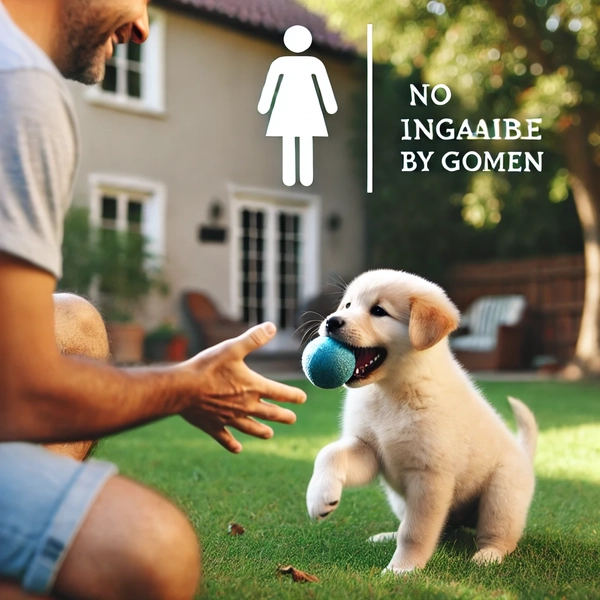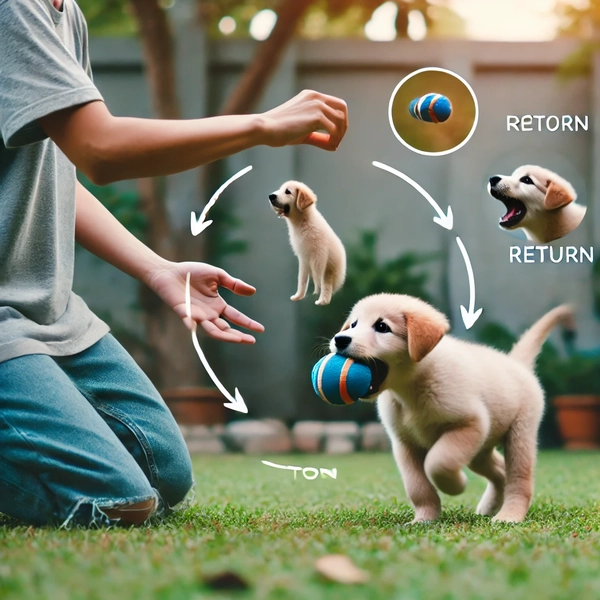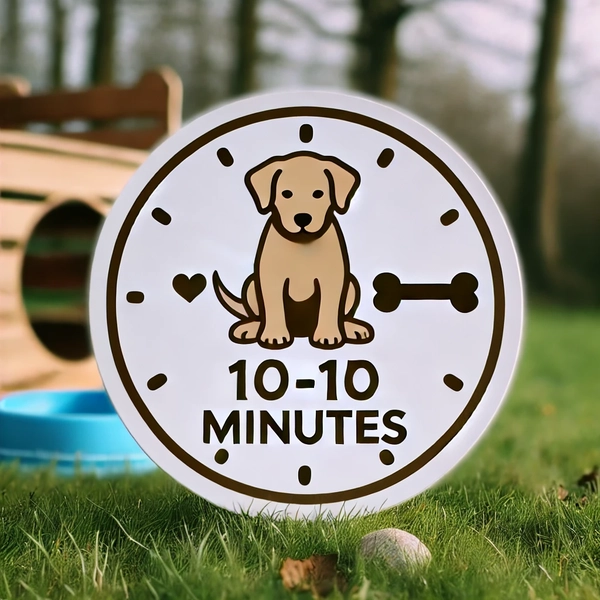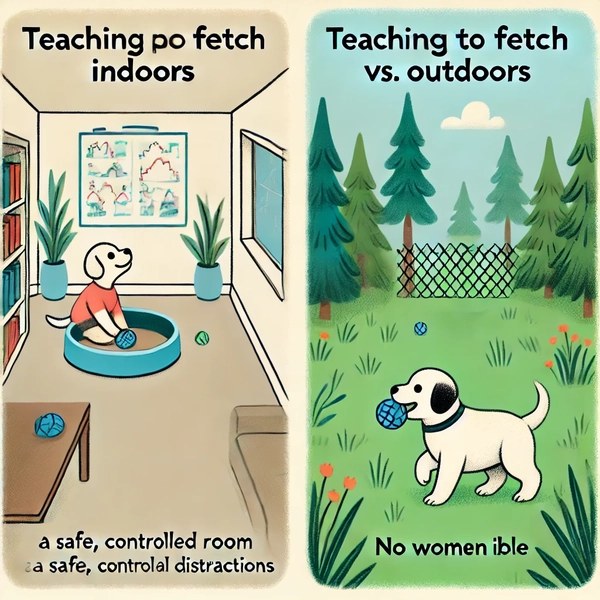How to teach a puppy to fetch and return? – Incorporating fetch and return activities into your pump’s training schedule is interactive, entertaining, and enjoyable. It not only provides a great physical workout but also helps his or her mental growth in practical ways.
Moreover, it is a beneficial activity that tends to exhaust a puppy without pushing him or her to the extreme.
Here are instructions you can apply to teach your puppy to fetch and give back. Sooner than later, your puppy will be viewed charging for the toys and returning them in seconds.
Why is Puppy Fetch Training Essential?

Puppy fetch is more than simply an activity; it is an opportunity for a puppy to grow. This is because:
- Exercise: Puppy energy is common, and so fetch is a useful game that helps exhaust this energy in the right way.
- Cognitive Emphasis: There is quite a bit of running after a toy, fetching it, and returning it, which involves a mental process that is quite interesting.
- Relationship: The more two or more people play together, the more affection each has for the other, hence making it easier to train the affected puppy.
Getting Ready to Teach Retrieve
Before you jump into dog training, there are a few things to prepare for. These will help the entire process go smoothly for you and the puppy.
1. Selecting suitable objects for Puppy to play Fetch
Not every toy makes a good fetch toy. Select one that can be easily retrieved and carried comfortably in the mouth of the dog. Here are some guidelines for selection:
| Type of Toy | Description |
| Balls | Small enough to fit in your puppy’s mouth, but not too small to be a choking hazard. Rubber or tennis balls work well. |
| Rope Toys | Good for tugging after fetch and easy to hold for your puppy. |
| Squeaky Toys | Some puppies love the sound of squeaky toys, which can make fetch more exciting for them. |
| Frisbees | If your puppy enjoys running and catching, a soft frisbee could be a good option. |
Check that the toy in question meets both the safety and durability standards so that the puppy does not swallow or chew it out.
2. Prepare a Safe Place for Playing Fetch
Find an area for this activity that has space in which the puppy will be allowed to run. This may include:
- Your garden
- A quiet Park
- In the house where there is an open space
Try to eliminate other interruptions, such as other dogs or loud sounds, as much as possible so that all their attention is focused on the game. Learning will also be easier for them in a safe place that they also know.
How to Teach a Puppy to Fetch and Return

Having found an appropriate toy and a suitable location, it is time to train the puppy to fetch. Take these simple considerations:
1. Make The Puppy Want The Toy
You must know this: a puppy must show interest in the toy. They will only go after the toy if they are interested in it. You can do it in the following manner:
- Sway the toy before him.
- Squeeze the stuffed animal without holding it back ( only if it is squeaky).
- Throw it away and make some fuss when they run after it.
Try this only if your puppy is trying to “tag” the toy because there is no more space for running. They will feed off your enthusiasm.
2. While Playing Fetch, Try to Begin With Short Throws First
In the beginning, don’t throw the toy too far. More like 5-10 feet would be the farthest length toss.
You want your puppy to be able to easily chase the toy without straining. When they chase the toy, use a command like “Fetch!” while raising your tone. This will help them understand that they are supposed to go after it.
3. Encouraging Releasing the Toy
Once your puppy makes a gallant effort to grab the toy, the most challenging part starts – getting the puppy to return the toy. Most puppies will want to dart off with the toy. However, you can:
- Excitedly call their name.
- Clap or make other amusing noises to get their attention.
- Use a toy to get them back. They may return and run towards you because they want the other toy.
Also, remember not to run after them at first if they do not come back. This will only make it more frustrating, as it will become a game of chase!
4. Do Not Hesitate to Use Treats to Encourage Them
The treat must only be awarded once the puppy returns the toy and does not ask for their fetching to be done again so they understand that fetching has a return aspect.
Here’s some grounded advice: Several small and soft treats should be used so that they do not interfere with play.
5. Train them with Release Command
Now that your pup is giving you back the thrown toy, it is time to teach him the command – let it go. This can be challenging, but your puppy will consist entirely of the end.
6. Slowly Increase the Challenge
With each improvement in your puppy’s sweet-fetching, begin to toss the toy farther away. Gradual progress will help build their confidence and improve their skills. Don’t increase the distance too fast – allow them to succeed with short distances first.
Troubleshooting Common Fetch Problems
Playing fetch can be pretty tricky for some dogs. Some of the problems include the possible solutions;
1. Puppy will Not Chase after the Toy
In case your playful pet is not interested in running after the toy, consider the following:
- Changing the toy to one in which the puppy shows an interest.
- Throwing a toy with different properties, such as size, shape, sound, or texture.
- Using one’s images to enhance the drama of the game where they operate the toy, for instance, running around with the toy or waving it
2. Puppy does not Return the Toy
After grabbing the toy, some puppies simply refuse to turn over and return. Such behavior can be irritating! Try:
- Take a second toy with you to coax them back.
- Resisting the desire to run after them (as this will show that the game is one they can boss around).
- Providing treats for retrieving the toy only.
3. Puppy refuses to let the Toy go
If your puppy is very fond of a particular toy and cannot let it go, then try using these methods:
- The toy can be exchanged with food that the puppy finds very appealing.
- This command can be taught during fetching sessions when one plays with less desirable items, considered out of the fetch game to practice ‘dropping’ the item being held.
Advantages of Playing Fetch
You might ask yourself—what’s the point of all this? Why train your puppy to fetch? Well, there are many pros of fetching for you and your puppy.
|
Benefit |
How It Helps |
|
Physical Exercise |
Keeps your puppy active, helping them burn energy and stay healthy. |
|
Mental Stimulation |
Encourages problem-solving as they figure out how to chase, grab, and return the toy. |
|
Improves Obedience |
Strengthens listening skills as your puppy learns to follow commands like “fetch,” “come,” and “drop.” |
|
Enhances Bonding |
Builds trust and friendship between you and your puppy through fun and positive interactions. |
|
Good for Socialization |
Helps puppies learn to focus and follow instructions in various environments. |
The Ideal Time Limit for Playing Fetch with a Puppy

While fetch is an engaging activity, puppies may tire out quickly, and hence, it should be remembered to maintain short lengths and breaks in the activity, mainly at the beginning. For instance, one can target 10-15 minutes in fetching practice. Extending it a little more is possible when the puppy’s stamina has improved.
Also, it’s essential to monitor and look after tiredness levels during play time as well:
- Slowing pace or collapse on the ground.
- The toy becomes uninteresting.
- Breath rate increases significantly.
If the little one appears worn out, consider a time out and allow them to rest. It’s all about having fun. With endurance workouts – no.
Ways to Enhance Fetch – Make it More Enjoyable.
The game of fetch for your puppy can be entertaining by doing fetch differently. You can consider the following solutions:
- New Toys: After some time, you can introduce a new type of toy to entice your puppy.
- Change of Venue: To break the monotony, take your puppy to a different park or throw the ball in the backyard.
- Add Obstacles: If the puppy pulls through, prepare some soft obstacles for him to run around before getting the toy.
Incorporating these variations in your fetch competition may make your puppy lively and happy to jump into action the next time you want to play.
Teaching Fetch Indoors vs. Outdoors

It is possible to teach your puppy to fetch indoors or outdoors. Each has its benefits.
Indoors:
- Controlled Atmosphere: Because there are fewer distractions, the puppy can take time and learn.
- Safety: There is no fear of losing the toy or the puppy running away from reach.
Outdoors:
- Wider Area: Papillons can sprint for longer distances and release more energy.
- Environmental Enrichment: Unlike fetching in other places, fetching at the park or in the yard provides different smells and sights that are pretty stimulating to your puppy.
Toys may be thrown and fetched by a puppy, and thus, this is considered a game. However, this is not just seeking pleasure; it is an avenue to transmit good behaviors, engage in physical outdoor activity, and forge relationships.
Let me reassure you that the most important element is giving it time and making sure the puppy has fun playing this game. Take baby steps, make it interesting, and reward with a compliment or a treat at the end of each little endeavor.
Your little one is sure to be a throwing dashing joy within no time, and what’s more, he will enjoy every single second of it!